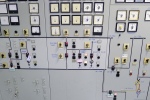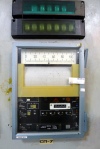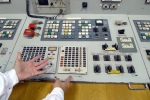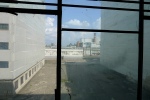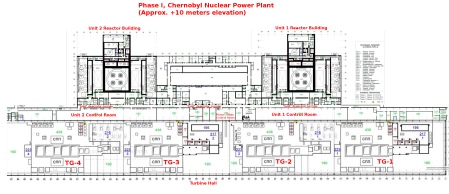The two boiling water reactors at Peach Bottom Atomic Power Station are of the BWR/4 product line from General Electric and are housed in Mark I (“lightbulb”) containments. They share a common turbine building and a common control room. Electrical output is about 1200 MW each, leaving the station at a respectable 500 kV to feed the power-hungry metropolitan areas of the northeastern United States. Condenser waste heat is rejected to the Susquehanna River, supplemented during particularly hot weather by some small forced-draft cooling towers. Peach Bottom’s official name harkens back to 1958, when “atomic power” was a celebrated novelty, and construction began on a unique gas-cooled reactor at the Peach Bottom site. The GCR operated until 1974. Units 2 and 3 came on line that same year on a site on the right bank of the Susquehanna River just north of Unit 1.
Nuclear power plants have understandably committed unprecedented attention to safety and security in the last decade or so. An unfortunate side effect has been that those of us who don’t work in these facilities have scant resources to help wrap our heads around their scale, layout, equipment, and operations. With that in mind, I’m profoundly grateful to Exelon Corporation’s Peach Bottom staff, and in particular Jim Kovalchick, director of security, for allowing the comprehensive tour on which these photos were taken in April 2012.
To see pics with my descriptive captions, you must click “permalink” in the slideshow view after clicking the thumbnails below. Sorry that’s not obvious, but WordPress.com has gone all knuckle-head in the tech department this year. If you want to see the FULL SIZED photo: (1) click the thumbnail; (2) select “permalink”; (3) click the larger photo. Whew!
- Unit 3 reactor building
- Plant entrance
- 500-kV transformer
- Control room
- RO’s consoles
- Core display
- ECCS controls
- Power-flow map
- Relay cabinets
- Control room entrance
- Turbine deck
- Unit 2 generator
- Generator nameplate
- Steam reheaters
- Generator cooler
- Motor control centers
- RHR pump room
- Emergency batteries
- Radiation monitor
- Reactor building shaft
- Main steam tunnel
- Spent fuel pool
- Fueling floor
- Control rod HCUs
- Control rod drive pump
- HPCI pump
- LPCS pump room
- LPCS pump
- RBCCW system
- RBCCW heat exchangers
- Recirc M-G set
- MG generator
- MG coupler oil pumps
- Circulating water pumps
- Atom Road

























































